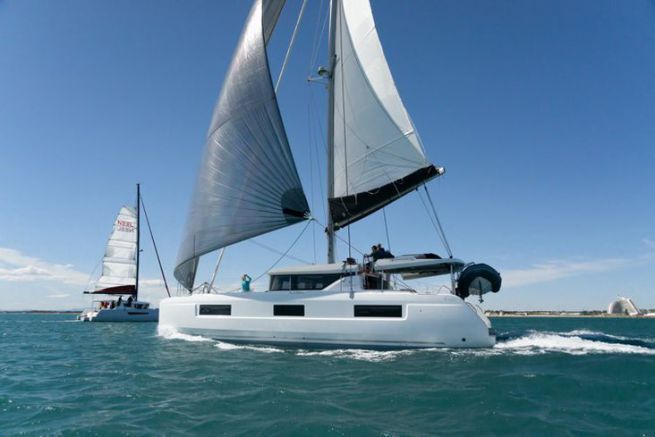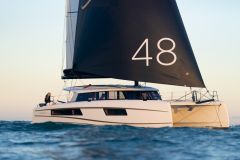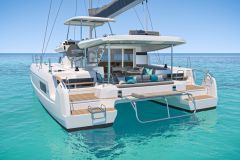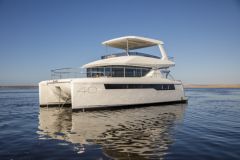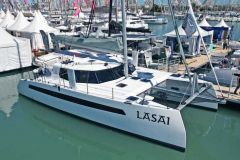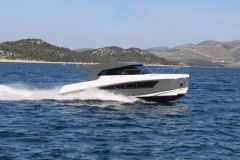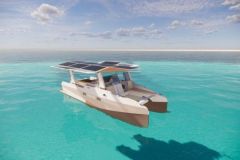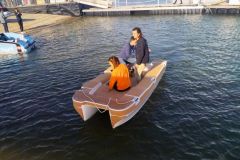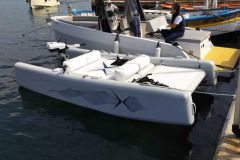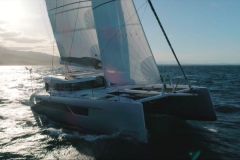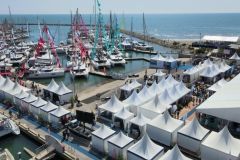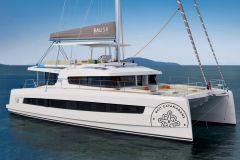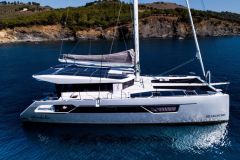A bridge helm station
Access to the flybridge wheelhouse can be gained via the starboard or port side catwalk directly from the cockpit. This guarantees easy access to the upper level, staying dry when the fly is covered with a full canopy. The full width helm and manoeuvring station forms a real bridge, but with the helm in the middle, it is preferable for berths to take the stern camera option, unless you have to move around on each side. Four of us can get along without being bothered, and solo it's very ergonomic too.
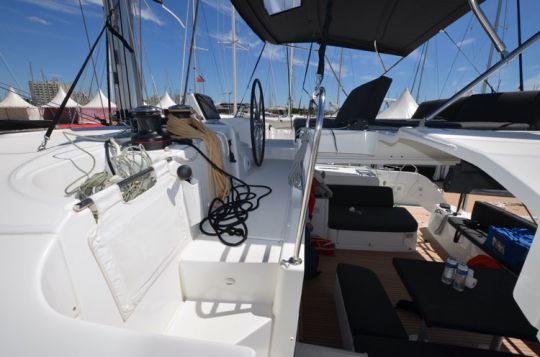
Practical fittings
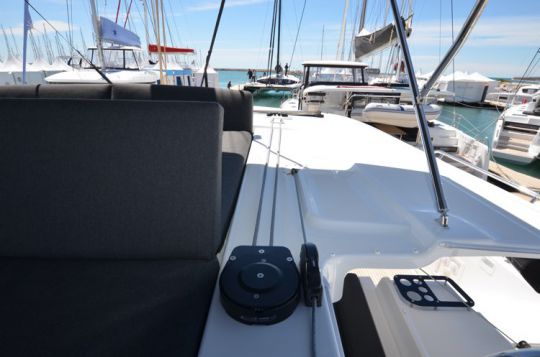
All the halyard and sheet ends come back on winches on each side of the helm, but two things make life easier for the yachtsman: the self-tacking jib, which is quite large due to the mast recoil, and the adjustment of the "flat winder", a kind of electric pulley on the flat deck. Both systems allow you to make turns and even gybes, alone at the helm and without effort, with an instruction manual. The Z-Spar mast is very high to regain the height of the area lost in width. To stand up on the fly, the boom is also very high and to lower it, you have to play monkey. The installation of a furling boom may seem like an alternative to be seriously considered.
Good engine agility
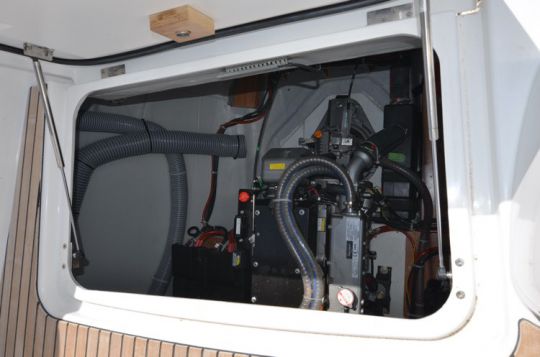
The propellers have been placed behind the rudders which makes the boat more agile in the marina. Our version is equipped with the optional 57 hp Yanmar engine. We reach 7.5 knots at 2300 rpm and 8 knots at 3000 rpm. The cruising speed range (2,300 rpm) allows you to cover more than 500 miles and the noise level in the cabins remains below 80 decibels in the forward cabins. The descent from the skirts into the engine compartment, however, could be improved.
A test in a nice breeze and flat sea
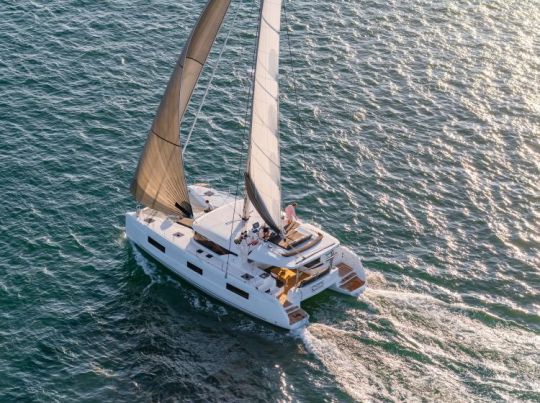
On this flat sea, we are moving away from the coast quickly under 1 reef mainsail and gennaker. With 18 knots of wind, this headsail is not essential and really finds its justification below 10 knots of wind, but you have to have fun and gauge the potential of this configuration. With her 20 tons in running order, the Lagoon 46 is extending her stride to 9 knots at 110° to the apparent wind. A spike even reaches 10 knots. The hulls appear to be on rails and encourage the pilot to connect without anxiety, especially since the steering sensations are affected by the transmission mechanism
As you go down into the saloon, it's surprising to note the serenity of the atmosphere and that's the real success of the concept: that anyone who spends the duration of a transatlantic race without leaving the helm should give me a signal. We lowered the gennaker to get back upwind in a wind now oscillating between 14 and 19 knots. In these conditions, tacking is a lot of fun and the speed at 32° from the apparent varies between 6.5 and 7 knots and climbs to over 8 knots coming 40° from the apparent, which is very honourable given the space available.
